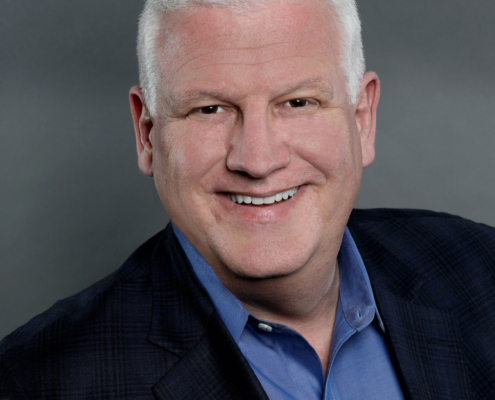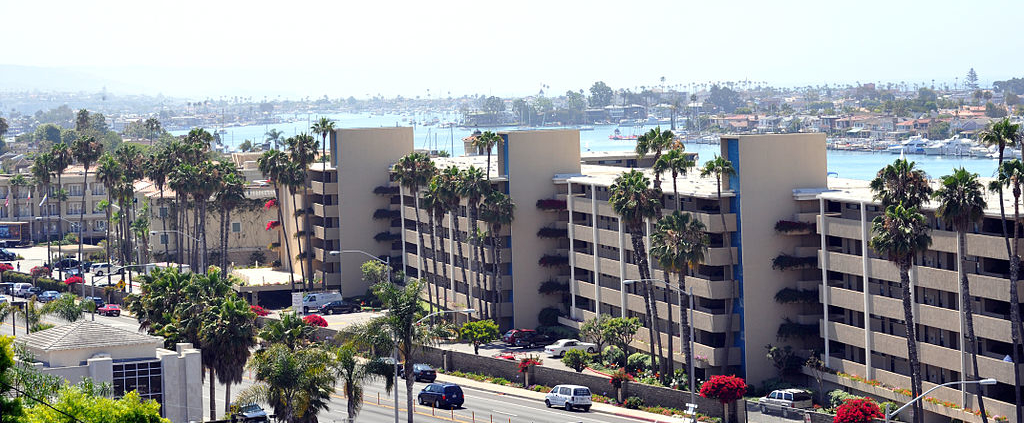Could a solution to the Balboa Ferry’s future be at hand?
By Gary Sherwin – July 18, 2023
Source: Stu News Newport Could a solution to the Balboa Ferry’s future be at hand?

Gary Sherwin
For the last several months, I’ve been writing about the monumental challenges involving the beloved ferry’s status, given a state mandate for it to convert to electric engines, just like the demands faced by auto companies to change by 2035. For some reason, however, the ferry needs to swap out these engines by the end of 2024. If it doesn’t, it’s out of business.
The Balboa Ferry is a beloved local attraction and one of our most popular with visitors. It is an iconic part of our city and is featured in travel outlets globally as one of the best things to do while in Newport Beach. Losing it would be a tragedy.
California has been leading the way nationally in the development of clean energy technology. It was decided that if you have a motor in just about anything, including leaf blowers, you will need to move to electric. And you apparently need to do it now.
Of course, that isn’t easy. The difficulty with all of this from the beginning has not been a reluctance to change the engines at the ferry; it has been the lack of technology to convert old wooden barges, which is really what the ferry is, and put in electric motors. It’s not like you can drop into Home Depot and pick one up. It just doesn’t exist.
And perhaps the biggest issue of all is the huge price tag to make this unfunded mandate happen, and those costs are skyrocketing.
However, there has been some good news lately on all of that, although the ferry is far from out of the woods.
Last week, Assemblywoman Diane Dixon met with the California Air Resource Board (CARB) Executive Officer, Dr. Steven Cliff, to move the issue forward. CARB is the regulatory agency overseeing the compliance, and Dixon indicated that they are engaged on the issue and said that if the Beek Family, which owns and operates the ferry, is committed to pursuing solutions to move to compliance with the ferry, they would not shut it down when the deadline comes next year.
CARB said they have heard plenty from the community and understand the importance of the ferry to Newport Beach. They want to work with them on grants and other ways to make the change possible.
But dealing with a huge government entity like CARB, which has 1,700 employees and a budget of $2.7 billion, is not easy. There is tons of paperwork, and Seymour Beek, who runs the ferry, has had his nephew Joe Beek, an attorney, take the lead. The details of filling out numerous grants are mind-numbing.
Another positive sign is the expected contract signing this week with San Diego-based Aurora Marine Design and Green Yachts, which will work together to see if a conversion on the vessels is even realistic.
The Beeks are paying $100,000 for this study themselves, and we’ll know by Christmas if the wooden boats can be retrofitted.
In the meantime, the expected costs to make the conversion happen have now gone from an estimated $5 million to nearly $11 million, some of which may be covered by grants. The rest will likely have to come from a community-based fundraising effort since the family-owned ferry probably can’t do that on its own. Nothing is cheap these days, especially a complex project like this one.
The goal is to keep the wooden ferries “as is,” rather than building all new ones, perhaps in another material like aluminum which certainly changes the historic charm of the attraction.
According to Joe Beek, it is a bit like remodeling a house. Some contractors will tell you that it might be cheaper to demolish an old place and start over, which could be the case for the ferry if a technical solution can’t be found.
The other issue is Coast Guard approval. They need to sign off once the conversion takes place and if they don’t feel comfortable with electric engines on old wooden boats, then they will stop operations despite CARB’s approval.
Aurora’s first goal is to see if the conversion can occur and what that looks like or if new boats need to be built. After that, phase two begins, and the Beeks will need a solution because that’s when the big costs kick in. Even with grants, some things will not be covered, like sales tax on materials which are expected to run as high as $150,000, according to Joe Beek.
While some grants will provide perhaps $1.5 million for equipment purchases, they also don’t cover the management costs of the project. The ferry has only one full-time management employee and Joe Beek was roped into the project by Seymour and is volunteering his time as a devoted family member. This is a huge burden on a very small family business.
CARB has said that the ferry does qualify for a deadline extension which they can apply for two of the ferries that can last up to two years. They may continue to apply for additional extensions if they are working in good faith on conversion, which the Beeks have said they will do.
One of the often-discussed solutions to the ferry dilemma by local wags is just to increase the ferry’s fares which are an amazing $2 per passenger, admittedly a pretty good deal. However, surprisingly, the ferry doesn’t have control over its own fares. The California Public Utility Commission decides these things, and they are reluctant to do that since they opt to keep transportation fares as low as possible. That squeezes the ferry since they can’t control their revenue despite rising costs.
So, the good news is that CARB sees the value of the ferry and has heard the public outcry about keeping it afloat. That’s a tribute to extensive media coverage and an online petition that generated thousands of signatures.
In the meantime, Joe Beek is buried in CARB grant paperwork and navigating the complex grant approval process. Luckily, he is an attorney and is somewhat used to this, but to a mere mortal, it would be a near-impossible challenge. State bureaucracy is never easy to navigate.
The really important point to note is that absolutely none of this makes business sense. For the ferry to shell out $100,000 to hire a marine design company, that is about one year’s operating profit. It’s a small business that generates $2 million gross on a good year. Many ferry owners would have just thrown in the towel and called it a day. Most businesspeople wouldn’t blame them.
Yet the Beeks remain committed and are working to find a solution, even if it is expensive and they will never recover the costs they are sinking into this.
The Beeks are devoted to this ferry and doing whatever they can to keep it operating. We should all be thankful that they are, as should everyone in Newport Beach who cherishes this important community asset.
Gary Sherwin is President & CEO of Visit Newport Beach and Newport Beach & Company.
Source: Stu News Newport Could a solution to the Balboa Ferry’s future be at hand?
Share this entry
Newport Harbor Foundation Chairman Dennis Durgan has announced the addition of Newport Beach Harbor Commission Chairman William “Skip” Kenney to the Foundation’s board of directors.
Kenney joins former Newport Beach Harbormaster Dennis Durgan, Val Lyon, and Devon Kelly.
“As we build out our board of directors Skip Kenney’s almost eight years of service as a harbor commissioner and over forty years of business experience is a welcome addition to the Foundation’s board,” said Dugan. “Skip was instrumental in the complex redrafting Title 17 of our Harbor Code so it reflects current conditions in the bay. He listened to the multitude of stakeholders and worked with his colleagues to help create a blueprint for the harbor that helps the Foundation with our goal of taking it to the next level.”
“My service on the Harbor Commission will end next June,” said Kenney. “I am excited about transitioning to the Newport Harbor Foundation and their mission to preserve our most important asset while improving it for future generations. I appreciate the Board’s confidence in me to help realize their mission.”
Kenney has been involved in the shopping center industry for over 40 years, many of which were spent at Donahue Schriber, a well known Southern California based shopping center developer. He formed The Kenney Company in May 1995 to pursue new development opportunities and challenges.
He is a past Chairman, President, and Treasurer of the California Business Properties Association, and a past State Governmental Affairs Chairman for the International Council of Shopping Centers (ICSC).
He currently is the Chief Financial Officer of Balboa Yacht Club and has been serving on the City of Newport Beach Harbor Commission since 2014, including three terms as Chairman.
The Newport Harbor Foundation was incorporated in 2019 as a 501C3 non-profit educational corporation dedicated to the preservation and improvement of Newport Harbor. At a recent kick-off luncheon, the Foundation raised $550,000 towards their goal of $2.5 million to purchase police boats and fire boat for the harbor.
Longtime Newport Beach resident Devon Kelly has joined the Newport Harbor Foundation board of directors.
“Devon brings a wealth of harbor history and knowledge to the Foundation’s mission. She has spent her entire life sailing on the bay and volunteering in the community. Her boundless energy is welcome as we push towards taking our harbor to the next level for all to enjoy,” said Newport Harbor Foundation Chairman Dennis Durgan.
“I’ve sailed throughout the United States and Mediterranean and believe Newport Harbor is a treasure that needs to be maintained and managed properly for future generations,” said Kelly. “I look forward to working with the Foundation to develop programs to improve water quality and enhance the harbor’s ecosystem for recreation, boating, and commerce.”
Kelly was born and raised in Newport Beach and grew up sailing and cruising to Catalina. She attended Newport Harbor High School and Cal Poly San Luis Obispo. She and her husband Gregg have two children who live locally. Kelly taught school at Carden Hall Elementary in Newport Beach, and coached field hockey at Newport Harbor High School. She has served on the Newport Harbor High School Educational Foundation and also was a Board member on the Lido Isle Community Association.
The Newport Harbor foundation was incorporated in 2019 as a 501C3 non-profit educational corporation dedicated to the preservation and improvement of Newport Harbor. At a recent kick-off luncheon, NHF raised $550,000 toward their goal of $2.5 million to purchase police boats and fire boats for the harbor.
It’s been more than five decades since Newport Beach City Councilman Marshall “Duffy” Duffield started his Duffy Electric Boat company.
Duffield built his first boat when he was 16 years old. His company has sold tens of thousands of boats and become synonymous with Newport Beach, where Duffy rides on the harbor are the norm.
“I’ve had to endure decades of laughter,” he told a crowd — also laughing — on Thursday at the Balboa Bay Resort. “To be known as a builder of the world’s slowest boat is something that I really didn’t think I wanted on this planet. I wanted to be a famous sailboat designer and racer dude, and I sort of kind of am, but not really.”
Still, Duffield now hopes the Newport Harbor Foundation can also similarly be built from the ground up.
The foundation, launched in 2019 before being curtailed due to the coronavirus pandemic, held a kickoff champagne brunch Thursday.
It announced that it had raised more than $275,000 at the event, which also served as a celebration of 50 years of Duffy boats. That number was doubled to $550,000, as foundation chairman Dennis Durgan said there was an anonymous matching gift.
The Newport Harbor Foundation’s stated goal is to take back local control of Newport Harbor, which is now patrolled by the Orange County Sheriff’s Department, and start a Newport Harbor Public Safety Department.
Durgan, himself a former harbormaster, said the foundation wants to initially raise $2.5 million for the purchase of a fire boat and four police patrol boats.




 Photograph by D Ramey Logan, CC BY-SA 3.0
Photograph by D Ramey Logan, CC BY-SA 3.0
Leave a Reply
Want to join the discussion?Feel free to contribute!